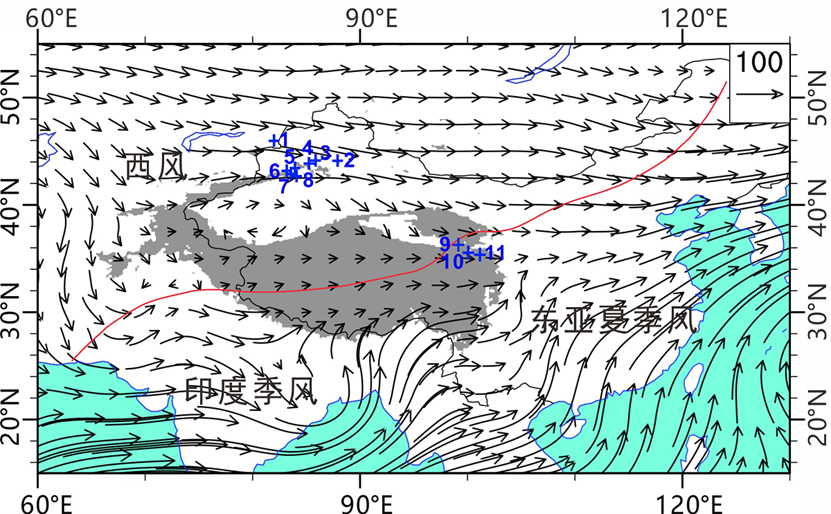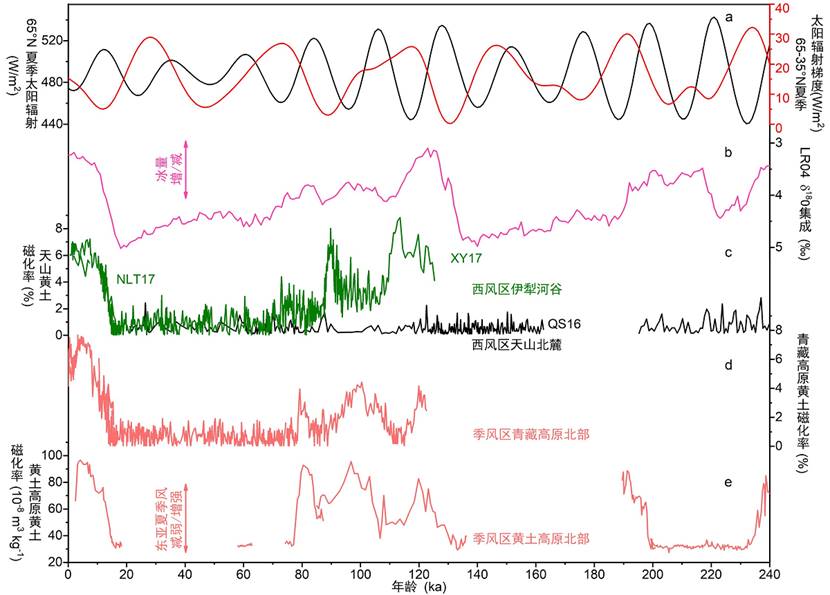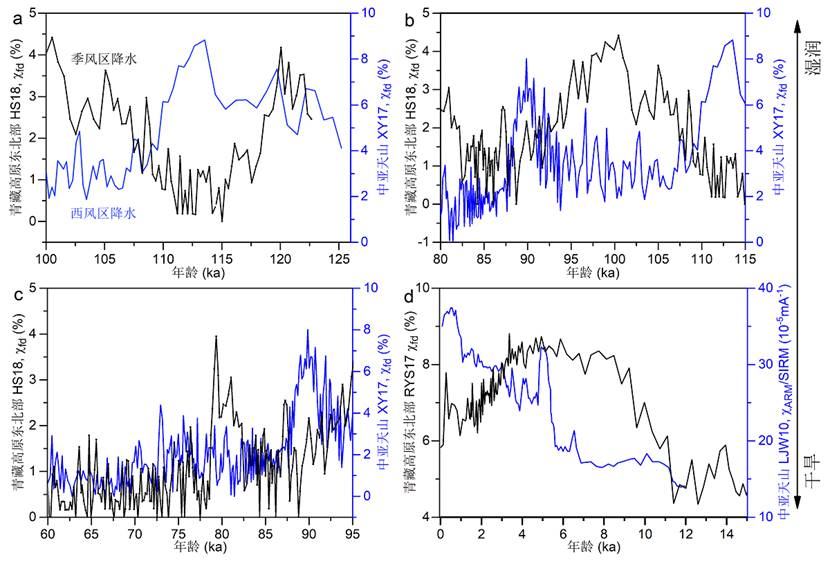Recently, the research group of Prof. Li Guoqiang of Lanzhou University has obtained the latest research results in the study of the past climate change models and driving mechanisms in the Tibetan Plateau and the northwest arid region of China.The research team reconstructed the history of precipitation changes in the northeastern Tibetan Plateau and the northwest arid region of China over the last 250,000 years, and discussed the impact mechanism of low-latitude monsoon and mid-latitude westerly climate changes on precipitation and environmental changes in different regions of China.
The research team carried out systematic high-density luminescence dating for the loess deposit records in the westerly areas of the Tianshan Mountains and the northeast of the Tibetan Plateau (Figure 1) and analyzed the climate change patterns (Figure 2, Figure 3).
The paper entitled "Paleoclimatic changes and modulation of East Asian summer monsoon by high-latitude forcing over the last 130,000 years as revealed by independently dated loess-paleosol sequences on the NE Tibetan Plateau " was the latest result of this research and was published online on April 22 in Quaternary Science reviews. Another paper entitled "Differential ice volume and orbital modulation of Quaternary moisture patterns between Central and East Asia" was published in Earth and Planetary Science Letters in January 2020. Prof. Li Guoqiang is the first author and first corresponding author of the above research papers, and Lanzhou University is the first completion institute.

Figure 1. Distribution of loess climate record study sites in the Tianshan and northeastern Tibetan Plateau

Figure 2. Comparison of reconstruction results of precipitation and effective humidity over the last 240,000 years in thewesterly zone of Central Asia and the monsoon zone of East Asia

Figure 3. The phase relationship between precipitation and effective humidity in the East Asian monsoon region and the Central Asian westerly region
This research has lasted for nearly ten years. Scholars from home and abroad participated in different stages of this study, including the Institute of Tibetan Plateau Research, Chinese Academy of Sciences (CAS), Institute of Atmospheric Physics, CAS, Nanjing University, Uppsala University, Sweden, University of Queensland, and Qinghai Salt Lake Research Institute, Hunan Normal University, Zhejiang Normal University, Northwest Normal University, Gansu Desert Control Research Institute, etc. This research has been supported by the National Natural Science Foundation of China and the Second Tibetan Plateau Scientific Expedition and Research.